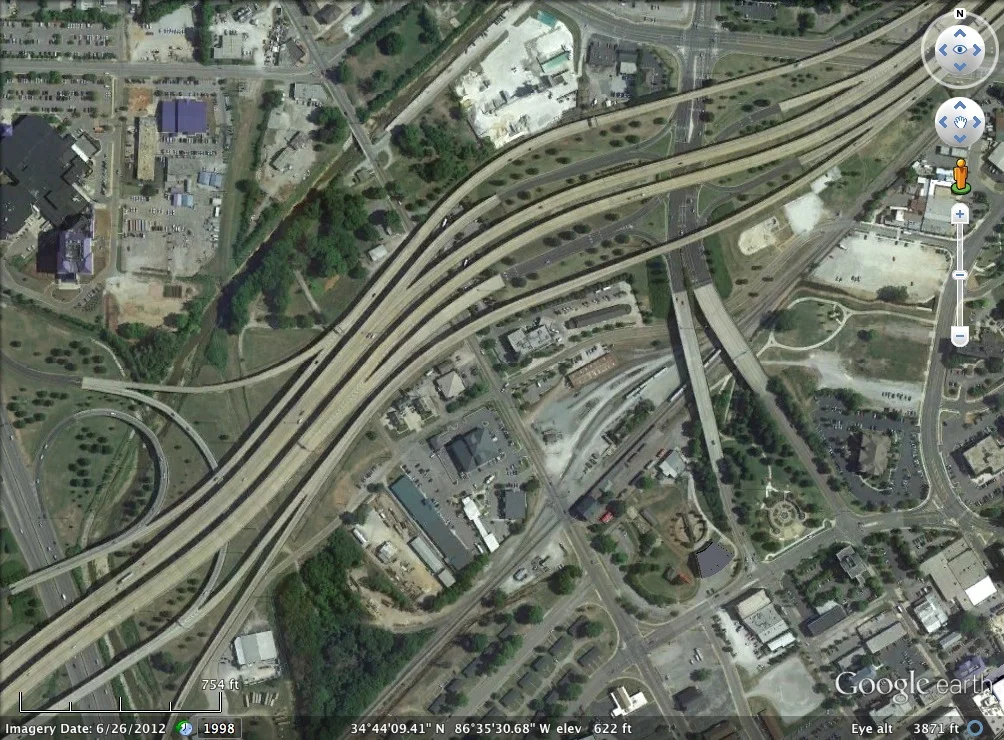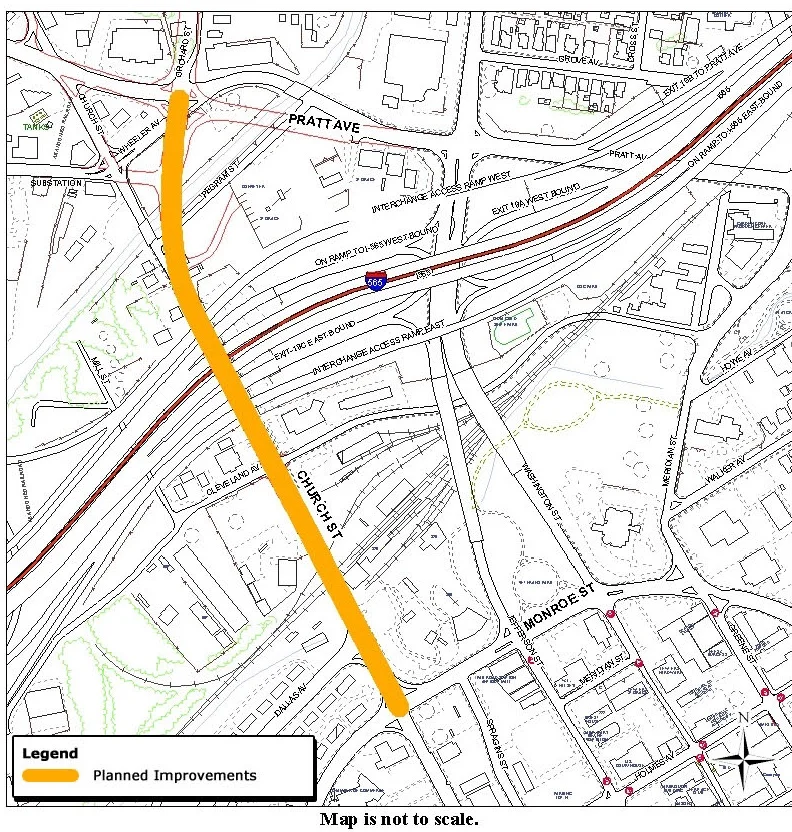Get the Feds out of transportation funding?
Last week I wrote about the need for architecture to Get Local. I've also written before about the shifting paradigms in transportation funding, including the cognitive dissonance that is all-too-common in this field. Today, it's a blend of both. Atlantic Cities had a very good piece last week from Eric Jaffe, entitled "The End of Federal Transportation Funding as we Know It." Of course there's no imminent plan to de-fund transportation and the federal level, but there is no shortage of discussion about what to do. Jaffe goes through the cases for devolution, for continued federal funding, and looks for a middle ground toward the end. Jaffe writes,
At stake is the very nature of America's top-down system of surface transportation funding. Confronted with these obstacles, officials and experts have intensified the debate over what role the federal government will play in funding transportation. Many are wondering, just as they did 120 years ago, whether there should be a federal role at all.
Count me as one who thinks it's high-time we questioned the federal role in transportation funding. It's patently absurd that the federal government routinely funds projects that are local roads, even if they may have a state highway designation. In a number of cases, federal and state moneys fund road expansion of local major streets (arterials in the professional jargon) that have no such designation. Local governments have simply gotten used to this as a source of money to be tapped, without enough critical thought about whether such projects really provide a Return on Investment, or whether they'll be able to maintain that infrastructure in 10, 20 or 30 years. For what it's worth, I'm similarly stumped as to why cities look for and rely on federal money for bike and pedestrian projects, and transit operations. Cities generate wealth (at least if they're functioning at all), and I'm dumbfounded as to why they can't fund their own infrastructure.
For an example, I threw a dart and picked out Huntsville, Alabama. Federal funding for transportation flows through State Departments of Transportation (DOT's) and regional Metropolitan Planning Organizations (MPO's). These groups are entrusted with devising 5-year project lists and 25-year plans for transportation funding, often called Long-Range Transportation Plans. These plans allocate federal and state dollars as they are solicited and received. All of these plans are typically online and publicly available. Huntsville's MPO is called HATS, or Huntsville Area Transportation Study.
In Huntsville's case, I simply flipped to the first page of the 2012-2015 Transportation Improvement Program project page. The first project listed by the City of Huntsville as their priority is a widening and realignment of Church Street in the City. Phase 1 of this project is 1.1 miles long, and carries a total price tag of $11.377 million. Of that, $9.114 million (80%) is from federal monies. Here's an aerial of that stretch of Church Street, and a map from the project page:
Church Street is not a state or federal roadway. In fact, it looks like a fairly typical city street in downtown Huntsville. It seems that the intent of this project is to provide additional roadway capacity (as engineers like to say) to help bypass the maze of limited-access roadways and interchanges downtown.
It should be noted that none of those highways are major north-south or east-west highways in the federal system. Interstate 565 is the closest to such a highway, but it's a freeway spur of about 21 miles that connects to Interstate 65. US 231, running north-south, is only a freeway for a few miles in the heart of the city.
One set of questions relates to the logic of such a project, and our entire society's misplaced priorities on moving cars quickly in the middle of an urban area. Regular readers I'm sure will know where I stand on that.
But a second, and I think equally as important, set of questions asks why is this project a federal concern? Why should my federal tax contribution pay for this particular road widening?
If the good people of Huntsville want to throw away their own money on auto-oriented infrastructure, I will defend their absolute right to do so. But please, I wish for them do it on their own nickel, not mine. Of course as an advocate of healthy downtowns, I'd rather see $11+ million spent on bike and pedestrian infrastructure. But again, I don't see how the expenditure of those dollars on the streets of Huntsville is something of national concern.
I should add that I'm not picking on Huntsville. The approach I've highlighted here is the norm throughout the country, and can be found in virtually any city of size.
Jaffe, in his analysis cites a reason why some support keeping the federal role as-is:
Some progressives believe that transportation is a basic social service that must be provided to all people equally, and that many states and regions will simply extend a general dependency on single-occupancy car travel if left to their own devices.
Very frankly, this is the mentality that funded suburban sprawl, and is financially ruinous of all levels of government involved in infrastructure. In my naiveté, I'd like to think progressives and conservatives could agree that the goal of transportation infrastructure is affordable mobility to the individual, and a system that is financially sustainable for local, state and federal government agencies.
We do have very serious infrastructure needs in this country, and I think it's folly to go the full devolution route and think there's no federal role. We are one country, after all, and the federal government can play a productive role in interstate travel for highways, air, rail and water. In fact, I'd personally like to see much more federal focus on interstate rail, along the lines of what has been achieved for highways and air travel.
But by all means, let's ask the hard questions about the federal role for anything smelling of local projects. It seems that in our two party political system, both parties could find something to like in an approach that brings more clarity of purpose and outcome.
If you got value from this post, please consider the following:
- Sign up for my email list
- Like The Messy City Facebook Page
- Follow me on Twitter
- Invite or refer me to come speak
- Check out my urban design services page
- Tell a friend or colleague about this site





